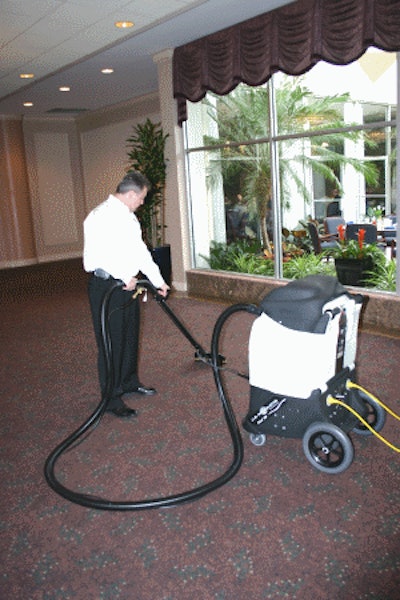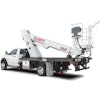
A woman posed a question on an interactive forum hosted by the television network The Learning Channel. The gist of her question was:
What's the best way to clean carpets? [I have] that cheap carpeting that's put down in new homes and I'd like to get two more years out of it. Should I hire a professional or rent a carpet cleaning machine?
Instead of receiving a number or responses suggesting one direction or the other, the online discussion quickly turned to one subject: Kawasaki disease (KD). In fact, with few exceptions, all of the responses were a discussion of KD and the woman's initial question, as to whether to hire a professional carpet cleaning company to clean her carpets or rent a machine, was essentially lost.
As we will discuss in greater detail below, KD is a very rare but very serious disease impacting small children. In April 2006, a report on Fox News suggested there was a connection between just cleaned carpets and KD, especially when children are present. Rental professionals should be aware of KD because some of these reports have suggested the disease can occur more frequently when homeowners rent carpet cleaning equipment instead of have their carpets cleaned professionally.
Whether it is the equipment, the homeowner's lack of proper training, improper use of the machine or cleaning agents, or inadequate drying time is not clear. However, because of the seriousness of the illness, and because it typically only affects children, a little knowledge about KD is helpful.
The Basics
As you can tell by its name, KD was identified in Japan back in 1967. It still occurs more frequently in Japan and Korea than in the United States. Most of the people who contract KD are children younger than 5; there are very few cases of KD among adults. Boys seem to be more affected than girls.
It is estimated that less than 10 of every 100,000 children contract KD; however, the nonprofit Nemours Foundation, one of the largest such organizations devoted to children's health, says the number of children impacted is closer to 20 per 100,000. The discrepancy is often attributed to misdiagnosis of the disease or underreporting.
According to the National Center for Biotechnology Information (NCBI), Bethesda, MD, the following are the most common symptoms of KD:
- A fever as high as 104 F that may last up to two weeks
- Extremely bloodshot or red eyes
- Bright red, chapped, or cracked lips
- Red mucous membranes in the mouth
- Strawberry tongue, white coating on the tongue, or prominent red bumps on the back of the tongue
- Red palms of the hands and the soles of the feet
- Swollen hands and feet
- Skin rashes on the middle of the body
- Peeling skin in the genital area, hands, and feet (especially around the nails, palms, and soles)
- Swollen lymph nodes, particularly in the neck area
- Joint pain and swelling, frequently on both sides of the body.
In most cases, treatment of the disease must start as soon as it is diagnosed in a hospital setting. High doses of aspirin along with gamma globulin are the customary treatment, which should start turning things around in about 24 hours. However, 25 percent of children with KD develop coronary artery problems and about 1 percent die of the disease even with treatment.
The Carpet Cleaning Connection
Earlier, we stated that a major U.S. news network reported there was a connection between KD and carpet cleaning. Although we do not know the exact source for their conclusion, it is possible it was derived from the following study.
Researchers in Colorado were looking into an outbreak of KD. Watching for connections between the various cases, one appeared to stand out: Of the 23 cases investigated, 11 occurred in homes where the carpets had just been cleaned.
Most of the cases occurred in April and May, two months when many families in Colorado have their carpets cleaned. Further studies revealed another connection: Of the 11 cases in homes where the carpets had recently been cleaned, most were in situations where the family had rented a do-it-yourself carpet cleaning system, and not called in a professional carpet cleaning company.
Pouring Cold Water on the Studies
Upon first reading about these studies, it is fairly easy to surmise there might be a connection between carpet cleaning and KD. However, a closer investigation and follow-up studies question these conclusions.
First of all, most Japanese homes, where the disease was first identified, do not have carpets and few have areas rugs, at least the kinds we most often find in American homes. Traditionally, they have mats and these mats are not typically cleaned using carpet cleaning equipment, chemicals, or related tools.
Second, and more conclusively, a study of KD by the Kempe Research Center in Aurora, CO, found there was no connection between carpet cleaning and KD. The researchers tested a variety of carpet cleaning systems and methods and none showed a direct or even an indirect association with KD.
What Rental Professionals Should Do
"What is most important is that rental professionals know the facts [about KD]," says Nick Wiebe, marketing manager for U.S. Products, a leading manufacturer of professional portable carpet cleaning equipment. "Reliable, credible information about KD is always the best defense should a customer ask about the disease."
Additionally, he suggests rental professionals consider renting more professional carpet extractors than the small do-it-yourself equipment, often found in hardware and grocery stores. These small systems, although they can do an adequate job, were originally made popular because they were so small and easy to transport. However, Wiebe suggests, some professional portable extractors are now designed for "solo" operation - meaning they can be easily transported and operated by just one person and are typically more effective at cleaning carpets.
"We have to remember, cleaning is primarily about health. The more professional systems have more power to remove deeply embedded soils, heat the cleaning solution to improve cleaning effectiveness, and [have] more powerful vacuums to remove moisture," he says. "The result is healthier and cleaner carpets."
He also suggests that rental professionals consider adding other carpet cleaning tools to their rental arsenal.
"One of the most important is air movers," he says. "Not only do these help dry carpets quickly, they are an inexpensive add-on that makes renting professional carpet cleaning equipment all the more lucrative."
Going for the Gold
When selecting professional carpet extractors to rent, look for equipment that has been tested and evaluated by the Carpet and Rug Institute (CRI) and received the Seal of Approval. These machines are put through a number of testing procedures to evaluate their effectiveness, how well they remove soils and moisture. A machine bearing the Gold Seal of Approval will provide excellent performance and protect the health of your customers.


















